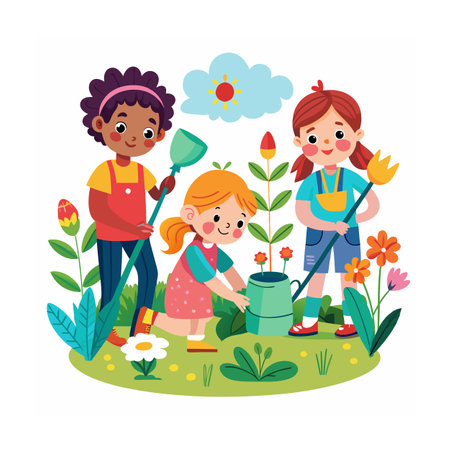Embracing Diversity in Your New Family
Blended families in the UK are becoming more common, bringing together people from a variety of backgrounds, cultures, and experiences. Embracing this diversity is an essential first step to building lasting harmony. Recognise and celebrate the unique backgrounds, traditions, and perspectives each member brings to your blended family. This not only helps everyone feel valued but also enriches your family life with new customs and ideas. A practical approach involves having open conversations about different family traditions or cultural practices, especially around key British events such as Bonfire Night, Christmas, or even Sunday roasts.
| Family Member | Background/Tradition | How to Celebrate |
|---|---|---|
| Stepchild | Scottish Hogmanay | Include traditional Scottish foods or songs during New Year celebrations |
| Stepparent | Caribbean Heritage | Cook a Caribbean dish together on special occasions |
| Parent | English Afternoon Tea | Host a family tea time at home with scones and sandwiches |
By making space for everyone’s background in day-to-day life, you foster respect and understanding within your home. Encourage each person to share stories or recipes from their heritage, or take turns choosing a “family day” activity that reflects individual interests. Small gestures like these help bridge gaps and lay the foundation for strong, supportive relationships in your blended family.
2. Effective Communication as a Foundation
Effective communication is at the heart of building strong relationships within blended families. When family members come together from different backgrounds and experiences, misunderstandings can easily arise if conversations are not handled thoughtfully. By fostering open and honest dialogue, you can help each person feel heard and valued. This means encouraging everyone—including children and adults—to express their thoughts and feelings in a safe, non-judgemental environment.
How to Foster Open Dialogue
Start by setting aside regular times for family discussions where everyone is invited to share their perspective. It’s important to listen actively—paying close attention, making eye contact, and showing empathy—rather than simply waiting for your turn to speak. Active listening also involves acknowledging what the other person has said before offering your own viewpoint.
Use Clear and Respectful Language
Misunderstandings often occur when people use vague or emotionally charged language. To prevent this, use clear, straightforward words and maintain a respectful tone at all times. Avoid sarcasm or criticism, which can create defensiveness or hurt feelings. Instead, focus on using “I” statements to express how you feel without placing blame on others—for example, “I feel left out when decisions are made without me,” rather than “You never include me.”
Communication Tips Table
| Tip | Description |
|---|---|
| Active Listening | Give full attention, nod in agreement, and repeat back what you’ve heard. |
| Open Questions | Ask questions that require more than yes/no answers to encourage sharing. |
| Respectful Language | Avoid shouting or name-calling; use calm and polite words. |
| Regular Check-ins | Schedule weekly family meetings to discuss concerns and celebrate successes. |
If you’re ever unsure how your words are coming across, it’s always safe to pause and ask for clarification. By prioritising effective communication, blended families can avoid unnecessary conflict and lay the groundwork for lasting harmony.

3. Establishing Healthy Boundaries
In blended families, creating harmony often begins with setting healthy boundaries. This process involves making sure that everyone understands what is expected of them, their individual roles, and the guidelines for daily life together. Clear boundaries help prevent misunderstandings and build a sense of trust and safety among all family members.
Setting Clear Expectations
Open communication is essential when discussing expectations within the family. Encourage each member to express their feelings and concerns, so that no one feels left out or unheard. A regular family meeting can be a helpful forum for these discussions, providing a safe space where everyone’s voice matters.
Defining Roles and Responsibilities
It can be challenging to define roles in a blended family, especially when new relationships are being formed. Clearly outlining responsibilities helps to avoid confusion and resentment. For example, parents should discuss their approaches to discipline and household routines beforehand, ensuring consistency across the board.
Family Guidelines Table
| Guideline | Purpose |
|---|---|
| Respect personal space | Ensures everyone feels comfortable and valued in their home environment |
| Share household chores | Promotes fairness and teamwork among all members |
| Set agreed bedtime routines | Provides structure for children and reduces conflict between parents |
Fostering Inclusion and Respect
It’s crucial that every family member feels respected and included. This means acknowledging different traditions, backgrounds, and preferences brought into the home. Encourage empathy by allowing each person to share their experiences and perspectives, building bridges rather than barriers.
By setting clear boundaries and maintaining open dialogue, blended families in the UK can create an environment where everyone feels secure, respected, and able to contribute positively to family life.
4. Prioritising Quality Time Together
Blending families can be challenging, but making time for shared experiences is a key step towards building strong, lasting relationships. In the UK, there are countless opportunities to create memories and bond as a new family unit. By actively planning activities together, you help every member feel valued and included.
Sharing Experiences
Dedicate time each week for everyone to do something enjoyable as a group. Whether it’s a Sunday roast at home, exploring the local countryside, or having a movie night with classic British films, these moments foster connection and understanding.
Taking Part in UK-Centric Activities
Engaging in traditional British pastimes can help your blended family feel more united and rooted in local culture. Consider visiting National Trust sites, going on seaside trips, participating in community fêtes, or watching a football match together. These shared cultural experiences encourage conversation and build cherished memories.
Ideas for Quality Family Time
| Activity | Description |
|---|---|
| Sunday Roast | Prepare and enjoy a traditional meal together at home or in a local pub. |
| Countryside Walks | Explore nearby parks or hiking trails; ideal for fresh air and relaxed chats. |
| Seaside Day Out | Visit coastal towns like Brighton or Blackpool for fun and bonding. |
| Community Events | Attend local fairs or markets to connect with your neighbourhood. |
Creating New Family Traditions
Start new rituals that are unique to your blended family. It could be as simple as baking scones together every Saturday morning or establishing an annual picnic in the park. These traditions give everyone something to look forward to and reinforce your sense of unity.
Safety Tip:
If you’re venturing out for activities, always consider everyone’s comfort zones and plan ahead to ensure accessibility and safety, especially when trying something new as a group. By focusing on quality time, you lay the foundation for trust and harmony within your blended family.
5. Supporting Each Other Through Change
Adapting to life in a blended family brings about inevitable changes for everyone involved. Offering emotional support during these transitions is vital for building strong, trusting relationships. It is important to acknowledge that challenges will arise—whether it’s adjusting to new routines, managing different parenting styles, or navigating complex emotions. Open communication and empathy go a long way in helping each family member feel heard and understood.
Practical Ways to Offer Support
| Action | Description |
|---|---|
| Active Listening | Take time to listen without judgement, allowing each person to express their feelings and concerns. |
| Encourage Openness | Create a safe space for honest conversations about what is working and what isn’t. |
| Celebrate Small Wins | Acknowledge progress, no matter how small, to boost morale and reinforce positive behaviour. |
Acknowledging Challenges Together
No two families are the same, and blending households often means facing unique difficulties. Recognising these challenges together helps prevent feelings of isolation. Remind one another that it’s normal to have ups and downs, and that mutual understanding makes overcoming obstacles easier.
When to Seek Outside Help
If tensions persist or issues feel overwhelming, it’s wise to seek support from outside sources. Professional counsellors, local community groups, or family mediation services available throughout the UK can offer tailored advice and guidance. These resources provide a neutral space for families to work through differences constructively.
Useful UK Resources for Blended Families
| Resource | Description |
|---|---|
| Relate | Counselling services for couples and families across the UK. |
| Family Lives | Support helpline and advice for parents in all types of family settings. |
| Gingerbread | Advice specifically for single parent and blended families. |
Remember, seeking help is not a sign of weakness but a proactive step towards creating harmony within your blended family. Supporting each other through change lays the foundation for lasting, positive relationships.
Respecting Previous Family Bonds
One of the most vital steps in creating harmony within a blended family is recognising and respecting the existing relationships children have with their biological parents and extended family. It is essential to understand that these bonds form a crucial part of a childs identity and emotional wellbeing. Rather than seeing these connections as competition, step-parents and other family members should value and support them, as this approach lays the groundwork for trust and open communication.
The Importance of Maintaining Connections
Encouraging ongoing relationships with biological parents and wider family members—such as grandparents, aunts, and uncles—helps children feel secure and loved. In the UK, it is common for children to spend time with both sides of their family, especially during school holidays or special occasions. This arrangement can be managed smoothly through respectful communication between all adults involved.
Ways to Support Ongoing Family Bonds
| Practical Steps | Benefits |
|---|---|
| Facilitate regular visits or calls with biological parents | Promotes emotional stability and reassurance |
| Include wider family in celebrations when possible | Strengthens sense of belonging and community |
| Avoid negative talk about the other parent or their relatives | Fosters respect and reduces loyalty conflicts |
Handling Sensitive Situations
If challenges arise—such as conflicting schedules or difficult emotions—it’s important to handle them with sensitivity. Openly discuss arrangements using clear and positive language. Where necessary, involve a neutral third party, such as a mediator or counsellor familiar with British family dynamics, to help negotiate solutions that prioritise the childrens best interests.
By actively valuing previous family bonds, blended families in the UK can build stronger foundations of trust, reduce anxiety for children, and cultivate an environment where everyone feels acknowledged. This respectful approach not only supports individual needs but also strengthens the entire family unit over time.


